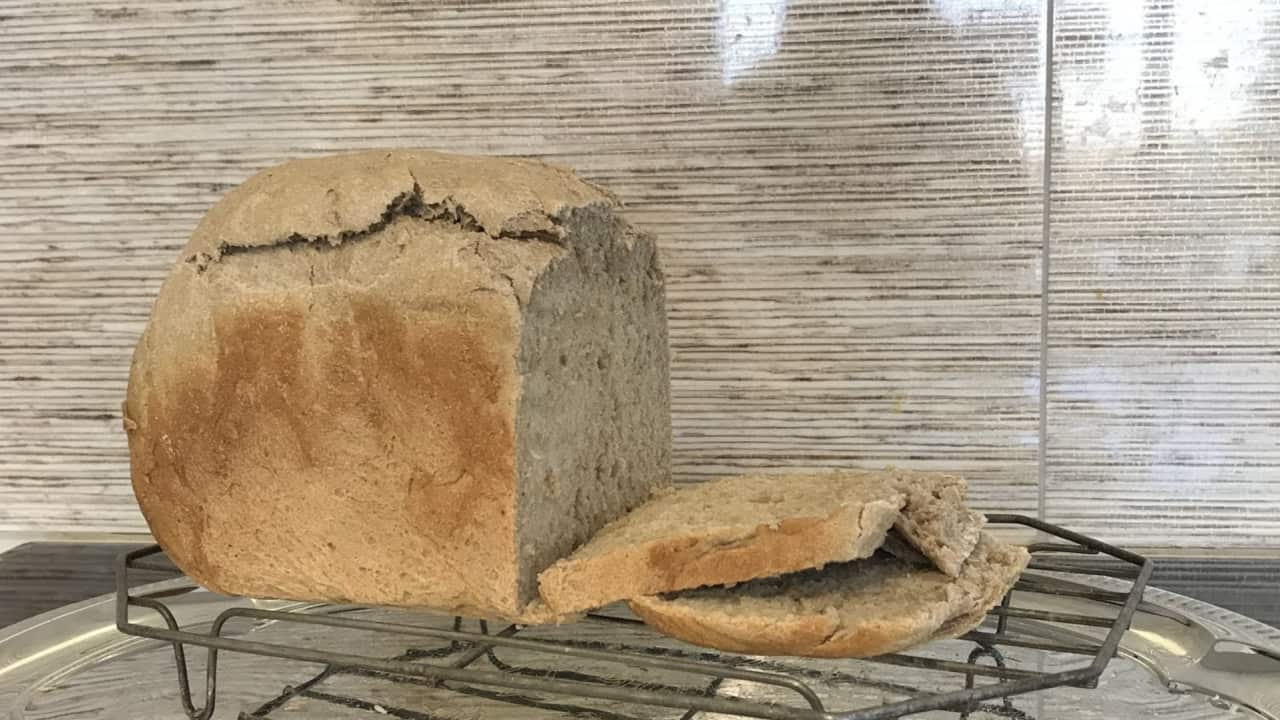Could a simple loaf of freshly baked bread, made using native millet, hold the key to improving the environmental sustainability of our land, boost our health and economically empower Indigenous communities?
It’s a big ask for a humble loaf. But according to a from the , native millet may be the native grain with the most potential to make it from paddock to plate, and change lives along the way.
The feasibility project, which looked into the environmental, economic and cultural viability of growing native grain crops (dhunbarbila) for bread investigated 15 grains on Gamilaraay country in western New South Wales.
It showed that native millet or panicum was the most economically viable native grain for local future farm enterprises because of its ability to grow well, and be easily produced and processed into loaves of bread.
“From a paddock to plate perspective (sustainably growing, harvesting, processing, selling and producing food), guli (native millet) has the most potential on Gomeroi country,” the report reads.
Flours made from ancient grains like native millet create heavy, dark and flat loaves of bread. The study recommends that native flours be blended with wheat in a ratio of 15:85 to make leavened bread that has a good texture, flavour and aroma.
From a paddock to plate perspective (sustainably growing, harvesting, processing, selling and producing food), guli (native millet) has the most potential on Gomeroi country.
'It can be done'
The one-year-long research project was conducted in consultation with local Indigenous communities and , directed and founded by Aboriginal foods expert Bruce Pascoe.
As Pascoe tells SBS, traditional owners have not only been producing native grains like millet but have been using it to make fire-roasted breads (dhuwarr) on local lands for thousands of years.
“We don’t know how long ago exactly but grinding dishes [discovered] date back around 65,000 years,” says Pascoe. “So that’s an indication that our people may have been cooking bread before the Egyptians – before anyone else thought of it.”
With that in mind, researchers designed the project to investigate whether the ancient grains production system of Aboriginal people, where flours were produced across many language groups by hand, could be adapted to the modern era.
Although the study looked at one local area, it was but one example to also analyse whether native grains could be produced on a national scale.
“It is complex, and cannot be achieved without a multidisciplinary approach,” the report reads. “But our conclusion? It can be done.”
The health and environmental wonders of native grains
Aunty Bernadette, the coordinator of the Garragal Women’s Language and Culture Network at Toomelah, believes an Indigenous-led native grains production chain could lead to community-wide improvements in health.
“If we start producing our own grains and flour it’s going to help, especially our old people who've been living for decades on all the white flour, salt and fat,” says Aunty Bernadette. “When they go back and eat traditional food and drink traditional herbal teas they get better."
As the report mentions, native grains are “significantly more nutritious than wheat”.
Native flours are high in fibre and gluten-free. They contain high amounts of minerals or micronutrients – iron, magnesium and zinc – and vitamins including thiamine and riboflavin.
They also have the potential to protect against nutritional diseases such as diabetes “as they contain large amounts of fibre and slowly digestible starch which improve digestion and support the growth of beneficial microbes living in our gut”.
Growing and using native plant species in an agricultural or horticultural setting is a valuable way of using the environment in a productive and balanced way.
The study details environmental benefits as well. It explains how perennial grains like native millet, which sequester carbon dioxide from the atmosphere, could help to mitigate global warming.
Native plants provide plant cover for long periods of time and protect soil from water and wind erosion.
They have also adapted to local conditions and events like drought, while some have developed water-saving features. Many have root systems that can access deep soil water reserves and shallow roots that take advantage of periodic rainfall events.
“Growing and using native plant species in an agricultural or horticultural setting is a valuable way of using the environment in a productive and balanced way,” the report reads.
Hopes for a future industry
Although some Indigenous social enterprises like Black Duck Foods are already producing native grains on a small scale, the report says more research and development is needed to occur to improve costs, threshing and seed processing of native grains so that it can become a large industry.
The report also identifies the need for Indigenous peoples to economically and culturally benefit from the development of a new native grains industry, and direct research and enterprise development related to native foods.
“Native grains and flours will be embraced by Australia because people will think it’s delicious,” says Pascoe. “There will be a new industry, a new style of agriculture and new food production techniques.
“But my fear is that Aboriginal people will be left out of this new industry. So my hope is that Australia will accept this food, know where it comes from and ensure that Aboriginal people share in this bounty.”
Note: Gamilaraay language words have been used in this article. The words will be different in other Aboriginal languages.







